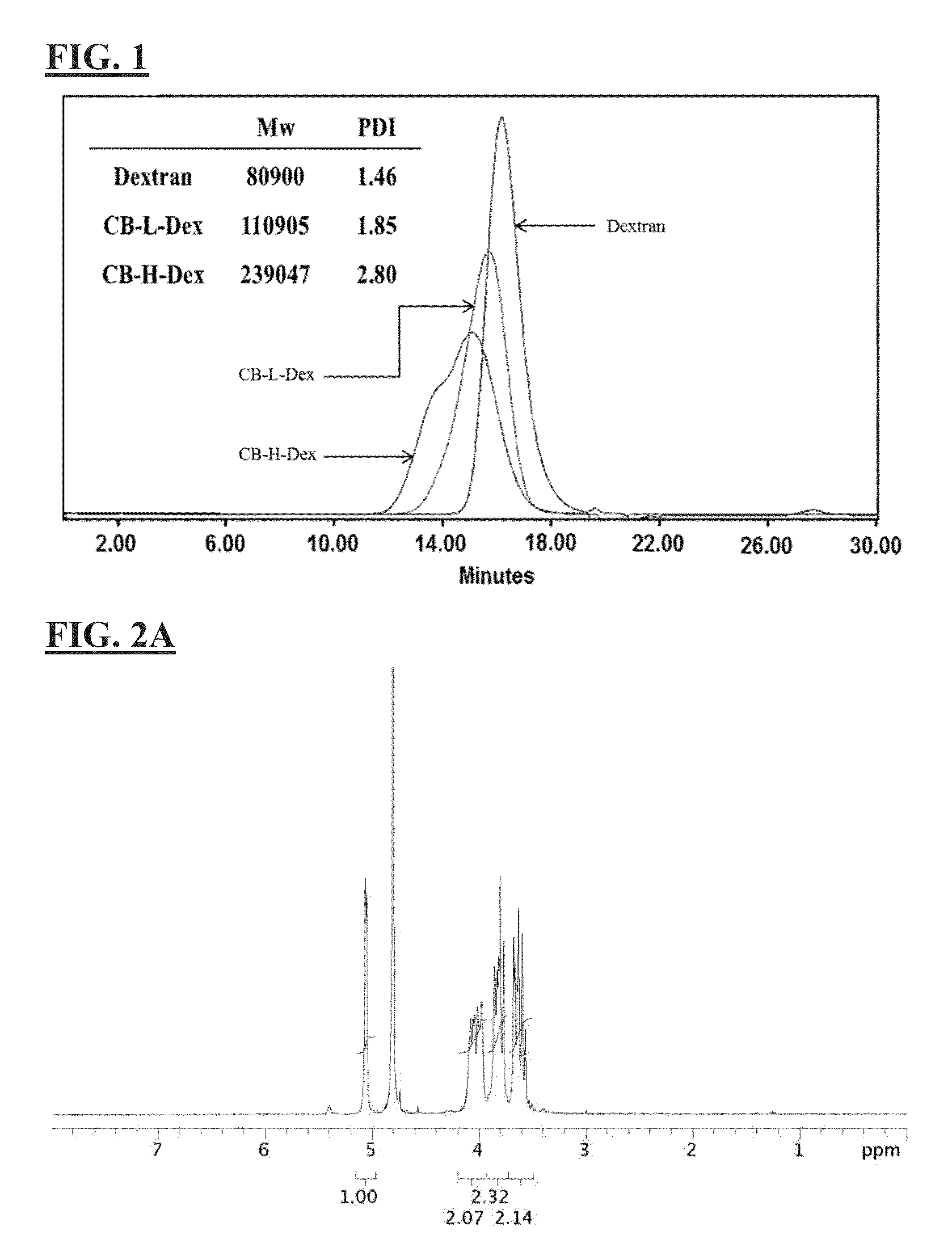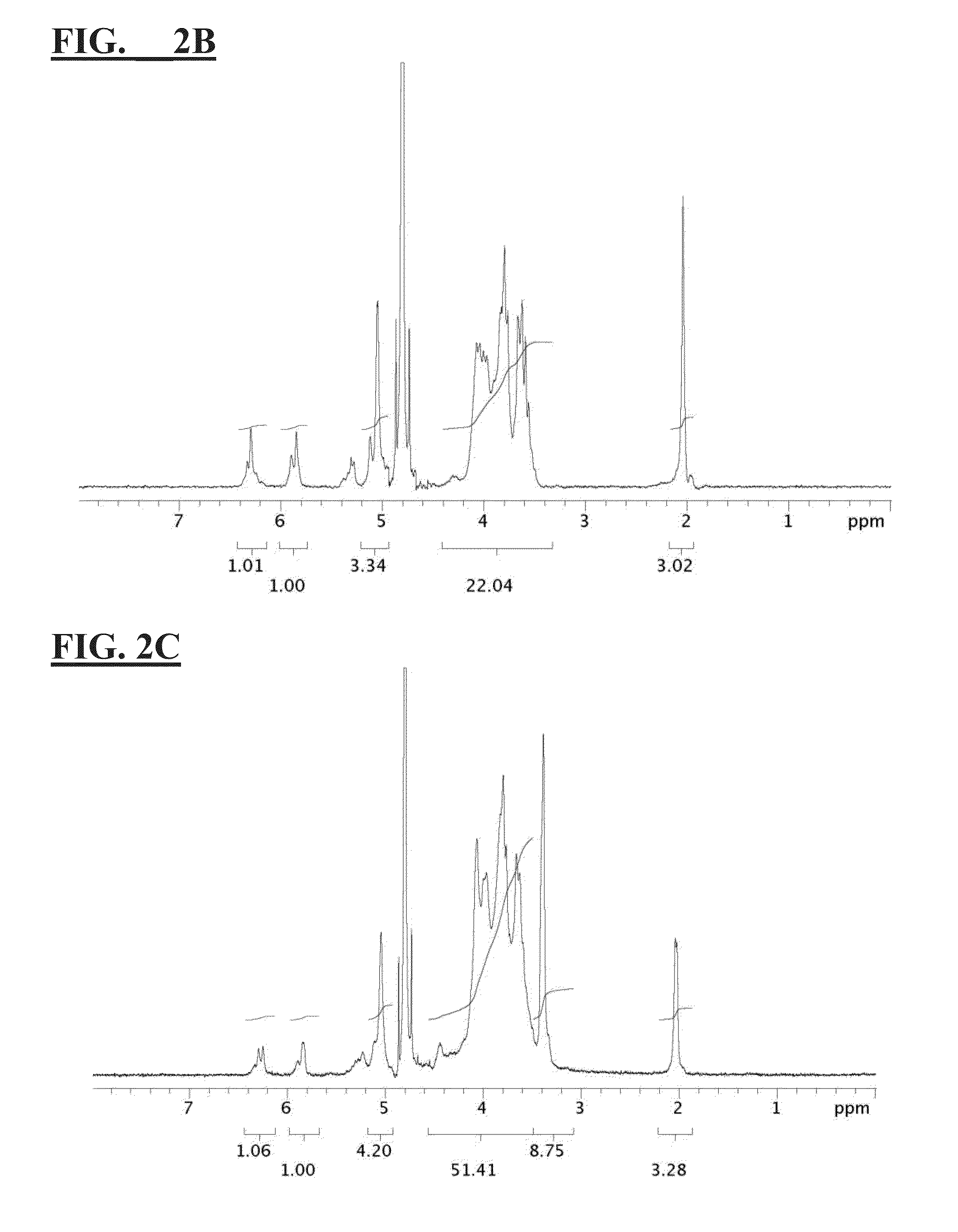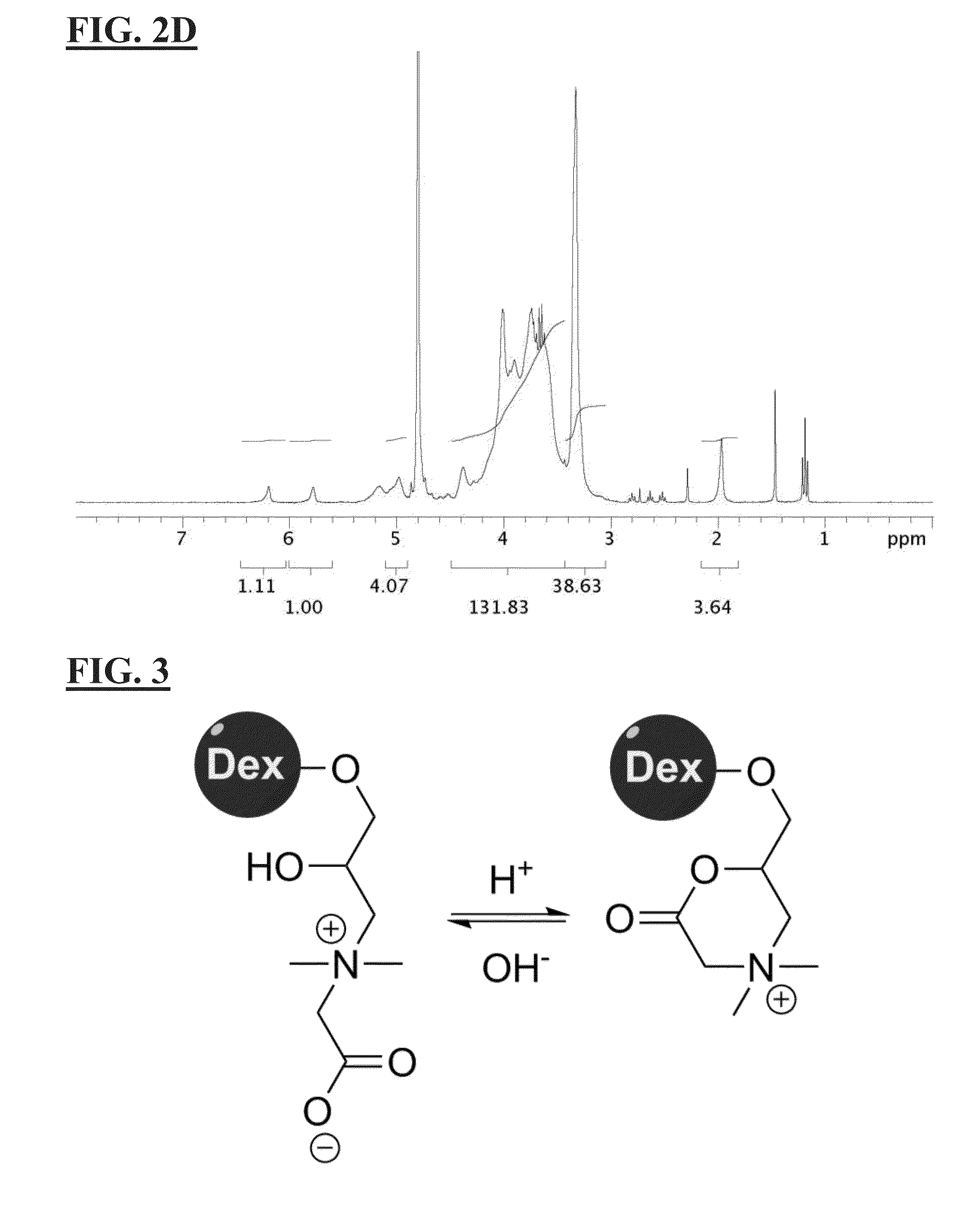Zwitterionic polysaccharide polymers having antifouling, antimicrobial and optical transparency properties
a polymer and optical transparency technology, applied in the direction of switchable antimicrobial and antifouling materials and coatings, etc., can solve the problems of failure of biomedical devices, failure of implanted devices, and inability to kill attached microorganisms, and achieve enhanced antifouling, excellent biocompatibility, and enhanced antifouling.
- Summary
- Abstract
- Description
- Claims
- Application Information
AI Technical Summary
Benefits of technology
Problems solved by technology
Method used
Image
Examples
example 1
Synthesis and Characterization of CB-Functionalized Dextran (CB-Dex)
[0124]4.9 mL (33.7 mmole) of N,N-Dimethylglycine ethyl ester was dissolved and hydrolyzed in 15 mL of NaOH solution containing 1.35 g of NaOH (33.7 mmole) at 50° C. for overnight. After the removal of the byproduct (ethanol) with rotary evaporation, the solution was mixed with 1 g of dextran (70 k) (6.13 mmole of glucose unit) in water, followed by the addition of 2.5 mL of epichlorohydrin (30.6 mmole). The mixture was stirred at 55° C. for 2 days. After the reaction, the product was purified by cellulose dialysis membrane (14 k cut off) and lyophilized to obtain CB dextran (CB-L-Dex). A higher degree of CB substitution was achieved by repeating the addition reaction with another 10 equivalent of reactant. Methacrylate (MA) as crosslinking groups was grafted onto the polymer backbone via the treatment of glycidyl methacrylate, the disclosure of which is hereby incorporated by reference in its entirety. Three MA modi...
example 2
Preparation of CB-Functionalized Dextran Hydrogels (CB-Dex)
[0125]Dextran hydrogels were prepared via photopolymerization as follows. All samples were dissolved at the concentration of 2 M (regarding to glucose unit) with 0.5 weight percent of photoinitiator, 2-Hydroxy-4′-(2-hydroxyethoxy)-2-methylpropiophenone, in water. Then the solution was transferred into a mold made of two quartz slides separated by an 1 mm thick polytetrafluoroethylene (PTFE) spacer and polymerized under UV (362 nm) for 1 hour. The gel was equilibrated in water for 3 days. The wet weight of the hydrogel sample was measured after the removal of excess water. Dry weight of each hydrogel was recorded after the sample was freeze-dried for 48 hours. The water content of the hydrogels (as a percent) were calculated by (Wet weight−Dry weight) / Wet weight×100.
example 3
Protein Adsorption Study of CB-Functionalized Dextran Hydrogel (CB-Dex)
[0126]To demonstrate this aspect of the invention, protein adsorption studies were carried out on the hydrogel surfaces and visualized with fluorescence microscopy. Three types of samples were compared, CB-H-Dex, CB-L-Dex and Dex-MA. Hydrogels of Dex-MA without CB side chains were used as controls in the study.
[0127]After reaching equilibrium in PBS, Dex-MA, CB-L-Dex-MA and CB-H-Dex-MA hydrogels were cut into discs with a biophysical punch (8 mm in diameter and 1 mm thick), washed thoroughly with deionized (DI) water and transferred into a sterile 24-well plate. 1 mL of FITC-labeled fibrinogen (FITC-Fg) solution (0.1 mg / mL) was added into each well. All samples were immersed in the solution for 30 minutes to allow protein adsorption on hydrogel surfaces. To remove loosely adsorbed proteins on sample surfaces, hydrogel samples were rinsed with phosphate buffered saline (PBS) three times. Protein adsorption on hydr...
PUM
| Property | Measurement | Unit |
|---|---|---|
| Transparency | aaaaa | aaaaa |
| Content | aaaaa | aaaaa |
| Fouling properties | aaaaa | aaaaa |
Abstract
Description
Claims
Application Information
 Login to View More
Login to View More - R&D
- Intellectual Property
- Life Sciences
- Materials
- Tech Scout
- Unparalleled Data Quality
- Higher Quality Content
- 60% Fewer Hallucinations
Browse by: Latest US Patents, China's latest patents, Technical Efficacy Thesaurus, Application Domain, Technology Topic, Popular Technical Reports.
© 2025 PatSnap. All rights reserved.Legal|Privacy policy|Modern Slavery Act Transparency Statement|Sitemap|About US| Contact US: help@patsnap.com



